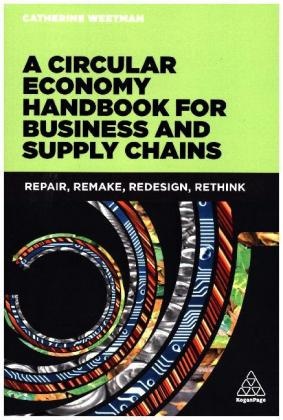Read more
Informationen zum Autor Catherine Weetman helps businesses develop 'future proofed', resilient strategies, assessing sustainability risks and value opportunities. She is a Visiting Fellow at the University of Huddersfield, a Vice-Chair of the Environment and Sustainability Forum at the Chartered Institute of Logistics and Transportation and gained an MSc in Logistics from Cranfield University. Ms Weetman's background includes Industrial Engineering in manufacturing and retail distribution, logistics solution design, project management, business intelligence, logistics product development and supply chain consulting. Her career covers food, fashion and logistics, including Tesco Distribution, Kellogg Company and DHL Supply Chain. Klappentext A Circular Economy Handbook for Business and Supply Chains is an easily digestible and comprehensive handbook that provides a clear guide to the circular economy. Real examples across a range of market sectors help businesses, students and policymakers understand the theory and fast-developing practice of the circular economy. A holistic framework for the 'design and supply chain', business models and enablers helps generate ideas, and the book includes tools to help you get started. Whilst growing global consumption presents fantastic business opportunities, our current 'linear' systems - take some materials, make a product, use it and then throw it away - are not fit for purpose. The circular economy unlocks this problem by 'decoupling' resources from consumption. Switched-on businesses are re-thinking product design, material choices, business models and supply chains. A Circular Economy Handbook for Business and Supply Chains is a 'must-read' for anyone who wants to apply the circular economy today.Online Resources: PowerPoint slides of figures and tables from every chapter created by the author Zusammenfassung Get a comprehensive guide to the circular economy, featuring real life examples and case studies. Inhaltsverzeichnis * Section - 01: An overview of the circular economy; ** Chapter - 01: The circular economy - What is it?; ** Chapter - 02: The design and supply chain; ** Chapter - 03: Circular economy business models; ** Chapter - 04: Circular economy enablers and accelerators; * Section - 02: How are businesses adopting circular economy models?; ** Chapter - 05: The 'Great Acceleration'; ** Chapter - 06: Food and agriculture; ** Chapter - 07: Fashion and textiles; ** Chapter - 08: Consumer electricals and electronics; ** Chapter - 09: Industrial manufacturing; * Section - 03: What does this mean for supply chains?; ** Chapter - 10: Supply chain strategy and planning; ** Chapter - 11: Supply chain - upstream: Product design, sourcing and procurement; ** Chapter - 12: Supply chain - midstream: The manufacturing process; ** Chapter - 13: Supply chain - downstream: Distribution and reverse logistics; * Section - 04: Implementation; ** Chapter - 14: Making the business case and starting the journey;...

